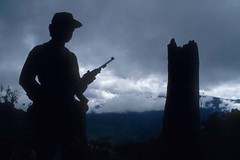When I visited the small Peruvian village of Antioquía over a month ago, a town that has changed its fortunes by painting its buildings beautifully, I mentioned that the project was being replicated in other towns across the country. I didn’t expect to see another example so soon…
Category: "Travel and Places"
Matucana
Continuing my series, Explorando Lima, in which I demonstrate the immense diversity that Peru has to offer without even leaving the region of Lima, I visit the town of Matucana and its surroundings, 75km from Lima at 2378 metres above sea level.
Touching the Void
The story of Joe Simpson and Simon Yates was turned into a book and a film both entitled Touching the Void. Although previously attempted, Yates and Simpson were the first people to ascend to the summit of Siula Grande in the Cordillera Huayhuash via the almost vertical west face. Disaster struck, however, on the descent…
Cordillera de Huayhuash
As part of my series Explorando Lima, in which I try to demonstrate the vast diversity and astounding beauty of Peru – so much of it that you need not even leave the region of Lima to find it, I show you arguably the most spectacular and beautiful places on the face of the earth. A remote range of mountains visited only by the most experienced of high-altitude hikers. The Cordillera of Huayhuash.
Poor people, Historic buildings
I still haven’t gotten used to the fact that in Peru the poor are the ones who live in the oldest, most historic and most culturally valuable buildings in the country, and in some cases most of South America.
It’s still strange to me that some of the most run-down, rough and poorest neighbourhoods are also the oldest, and that they are falling apart and no-one seems to care.
What’s strange to Peruvians, especially those who live in these buildings that can be hundreds of years old, is that in most other countries these buildings would be snapped up by the richest of the rich and be worth millions if not tens of million of dollars.
Santa Rosa de Chontay
Chontay was once and ancient resting stop or tambo on the way to Pachacamac from Juaja. The pre-Inca tambo building that existed was destroyed by the Spanish who built a church of the same proportions in its place in the 1630s. The bell is almost as old, from 1794. Some ruins can still be found, along with farming terraces which were once used to grow cereals and coca.
Antioquia
As part of the series Explorando Lima, in which I demonstrate the immense diversity that Peru has to offer without even leaving the region of Lima, I visit Antioquia, a town that brightened its future with a lick of paint.
Qhapaq Ñan, Lurín
As part of the series Explorando Lima, in which I demonstrate the immense diversity that Peru has to offer without even leaving the region of Lima, I walk part of the Qhapaq Ñam, the Royal Road otherwise known as the Inca Trail, in the valley…
Patrimony destroyed by earthquake
The incompetent INC, that’s Peru’s Instituto Nacional de Cultura or National Institute of Culture, has once again found itself responsible for destroying Peru’s priceless heritage.
Not content with exploiting and destroying Machu Picchu, and despite the vast revenue way into the tens of millions of US dollars they pull in, they had housed precious artefacts in cheaply constructed museums that are not earthquake proof in Ica and Paracas.
Pileta del Pisco
Peru’s national drink flowed from Lima’s 357 year old fountain in the Plaza de Armas today in honour of the country’s 186th anniversary of independence tomorrow. Where water flowed yesterday, pure Pisco spirit flowed today. To learn about Pisco, how it’s made and when and where it was invented, see here.
Ruins of the Lurín Valley
There have been so many ancient cultures in Peru who have gone on to create so many citadels, farming terraces, temples and pyramids that you often only need to climb the nearest hill to find remnants of their existence. Because of this the vast majority of the country’s archaeological sites are relatively unknown, unvisited and unprotected.
Tio Mario
It has been 20 years since a cart selling anticuchos appeared on the streets of the district of Barranco. Every afternoon Mario Farfán and his wife would sell their anticuchos to passers-by eventually saving enough money to open what is today one of the best anticucherías in Barranco. Mario’s cart has been exchanged for a large restaurant in a prime location overlooking the Bridge of the Sighs which he was able to buy for $160,000 US.




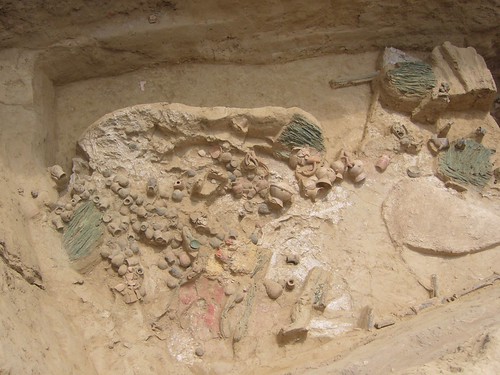
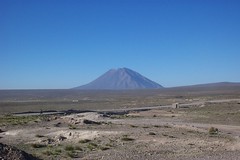

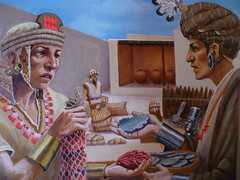
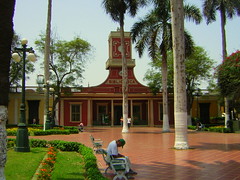
![Brutal deforestation in the Peruvian Amazon [Featured]](http://farm4.static.flickr.com/3275/2692204349_79a76e50da_m.jpg)
